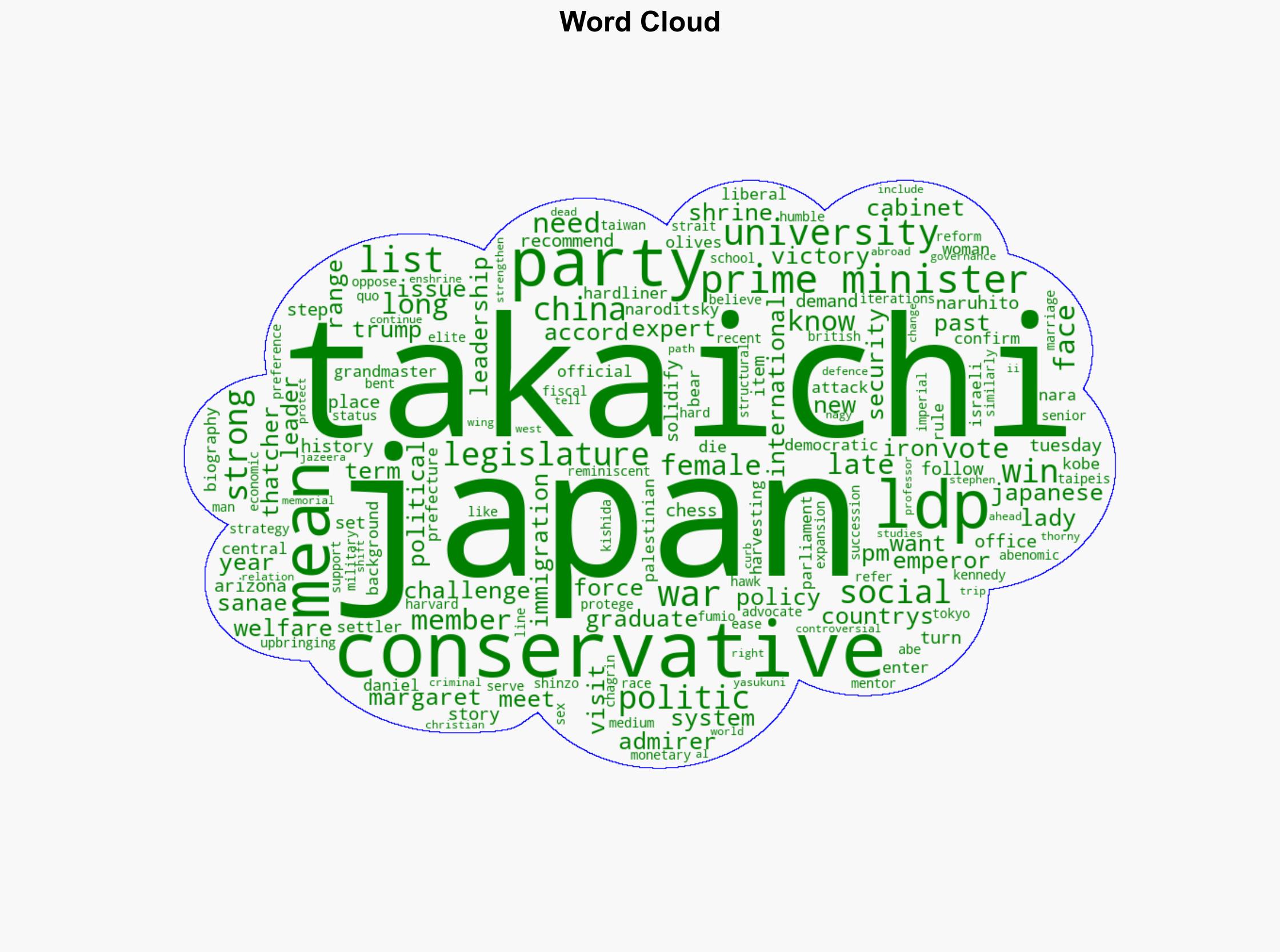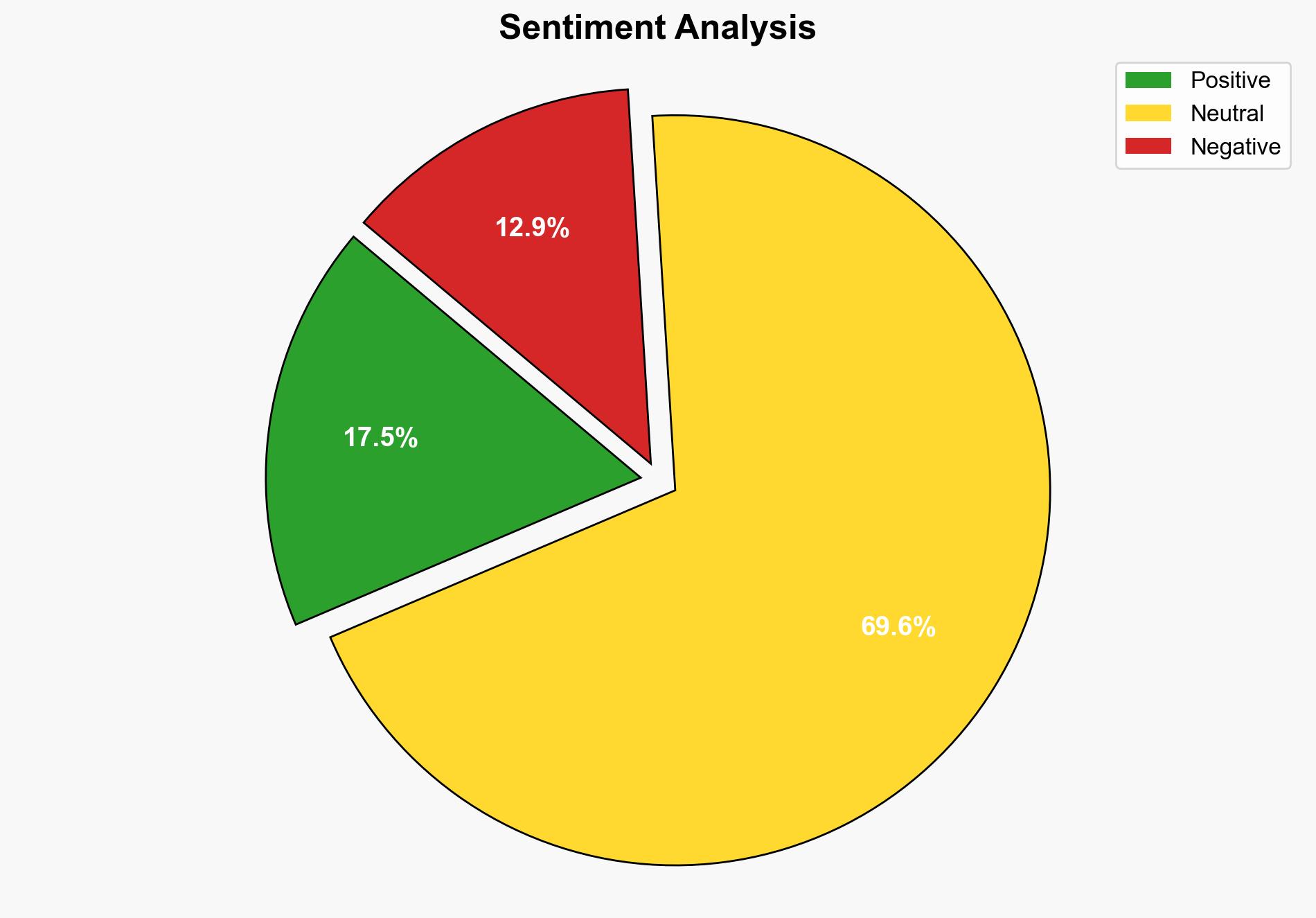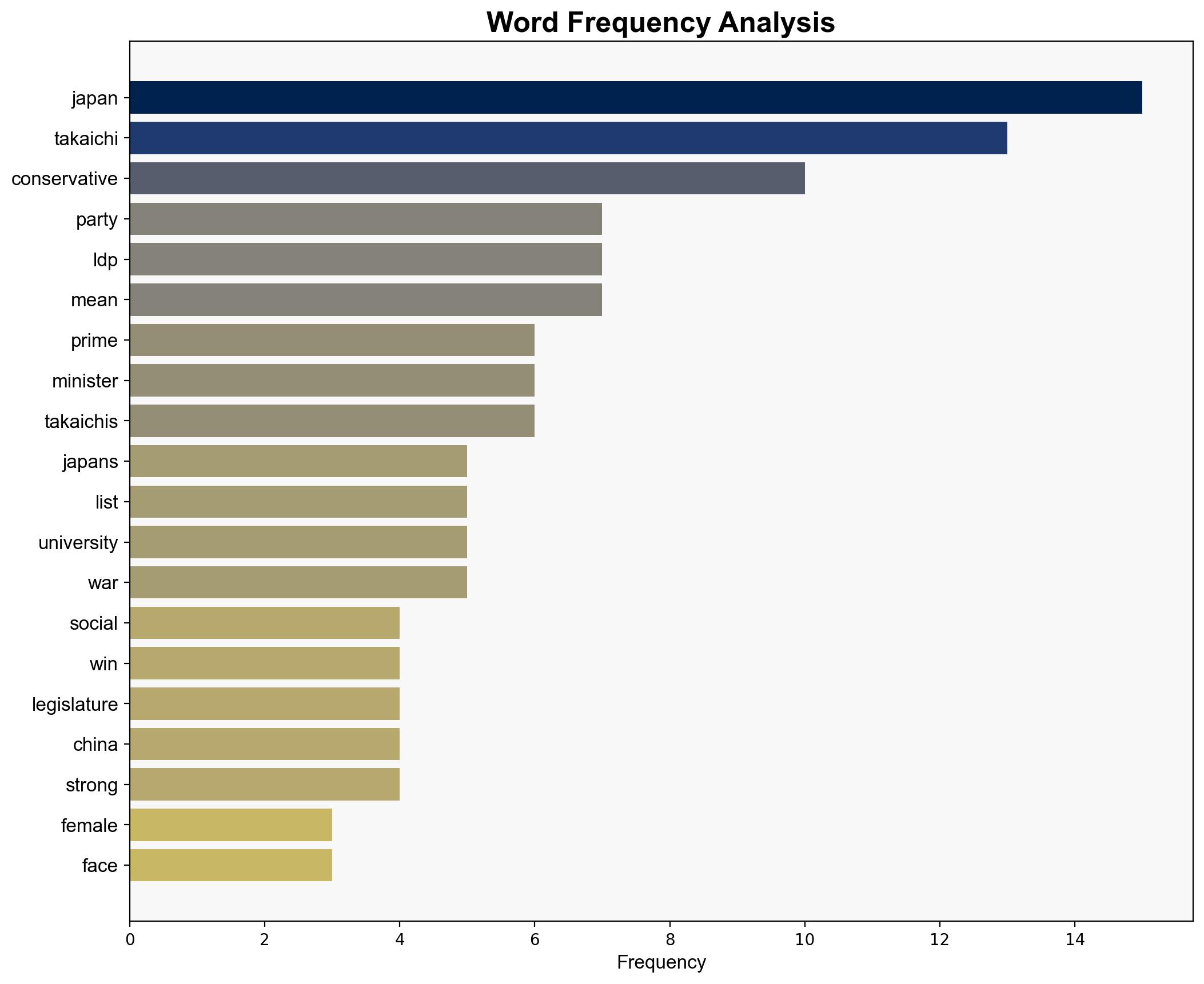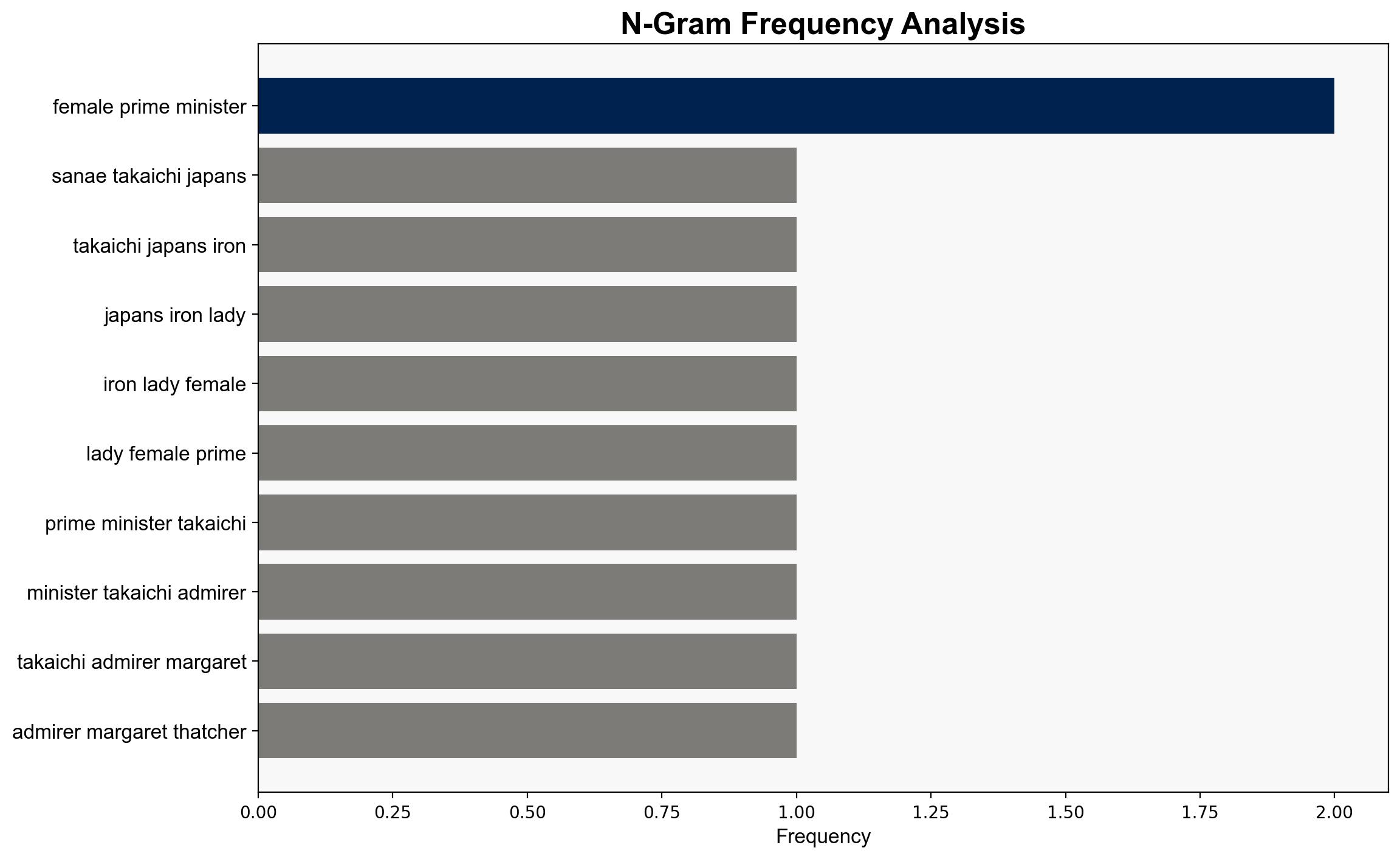Who is Sanae Takaichi Japans Iron Lady and first female prime minister – Al Jazeera English
Published on: 2025-10-21
Intelligence Report: Who is Sanae Takaichi Japans Iron Lady and first female prime minister – Al Jazeera English
1. BLUF (Bottom Line Up Front)
Sanae Takaichi’s potential leadership as Japan’s first female prime minister could signify a shift towards more conservative domestic and foreign policies, with implications for Japan’s regional relations and internal socio-economic dynamics. The hypothesis that Takaichi will maintain a conservative agenda is better supported by her political history and affiliations. Confidence level: Moderate. Recommended action: Monitor Takaichi’s policy announcements and alliances closely to anticipate shifts in Japan’s domestic and international posture.
2. Competing Hypotheses
1. **Hypothesis A**: Takaichi will pursue a conservative agenda, focusing on strengthening Japan’s defense, curbing immigration, and maintaining traditional social policies. This is supported by her admiration for Margaret Thatcher, her alignment with Shinzo Abe’s policies, and her hardline stance on issues like imperial succession and military strength.
2. **Hypothesis B**: Takaichi will moderate her conservative stance to build broader political support, potentially softening her positions on social issues and immigration to maintain coalition stability and address Japan’s socio-economic challenges.
Using ACH 2.0, Hypothesis A is more supported due to Takaichi’s consistent past positions and the backing of conservative elements within the Liberal Democratic Party (LDP).
3. Key Assumptions and Red Flags
– **Assumptions**: It is assumed that Takaichi’s past political stances will directly translate into her leadership agenda. Additionally, it is assumed that her conservative policies will not face significant internal opposition within the LDP.
– **Red Flags**: The potential collapse of the LDP’s coalition with the Komeito party could force policy shifts. The impact of Japan’s economic challenges and public opinion on her policies remains uncertain.
– **Blind Spots**: Limited information on Takaichi’s adaptability to changing political landscapes and potential influence from international actors.
4. Implications and Strategic Risks
– **Domestic Implications**: A conservative agenda may exacerbate socio-economic divides and provoke public dissent, particularly among younger and more progressive demographics.
– **Regional Risks**: Strengthening Japan’s military and taking a hardline stance on China could escalate regional tensions, impacting trade and security alliances.
– **Economic Risks**: Conservative fiscal policies may not effectively address Japan’s cost of living crisis or long-term economic stagnation.
5. Recommendations and Outlook
- Monitor Takaichi’s policy announcements and legislative actions to identify shifts in Japan’s domestic and foreign policy directions.
- Engage in diplomatic dialogues with Japan to understand potential changes in regional security dynamics.
- Scenario Projections:
- Best: Takaichi successfully balances conservative policies with socio-economic reforms, stabilizing Japan’s political landscape.
- Worst: Escalation of regional tensions due to aggressive military posturing, coupled with domestic unrest over conservative social policies.
- Most Likely: Gradual implementation of conservative policies with some moderation to maintain coalition stability and address economic challenges.
6. Key Individuals and Entities
– Sanae Takaichi
– Shinzo Abe
– Emperor Naruhito
– Stephen Nagy
7. Thematic Tags
national security threats, regional focus, conservative politics, socio-economic challenges





